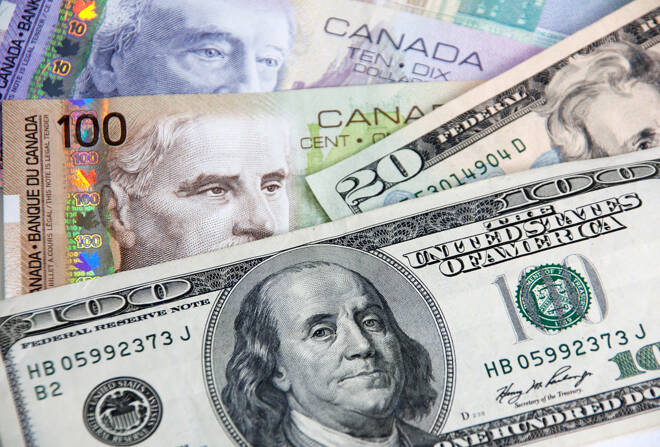Advertisement
Advertisement
USD/CAD: Canadian Dollar Loses Some Steam as Fed Tightening Looms
By:
“The FX market remains laser-focused on central banks that haven't tried to talk down inflation, indicating more urgency to hike sooner. That may not change the endpoint but the scope for an earlier hike has nudged USDCAD lower. Even so, CAD holds quite a bit of good news in the price, leaving us comfortable with our freshly minted USDCAD longs and a 1.2750 target,” noted Mark McCormick, global head of FX strategy at TD Securities.
The Canadian dollar traded marginally lower but remained range-bound in lacklustre trade against its U.S. counterpart on Thursday amid fears the Federal Reserve will become more hawkish on inflation next week, thus strengthening the greenback.
“The FX market remains laser-focused on central banks that haven’t tried to talk down inflation, indicating more urgency to hike sooner. That may not change the endpoint but the scope for an earlier hike has nudged USDCAD lower. Even so, CAD holds quite a bit of good news in the price, leaving us comfortable with our freshly minted USDCAD longs and a 1.2750 target,” noted Mark McCormick, global head of FX strategy at TD Securities.
In yesterday’s meeting, the Bank of Canada surprised markets by announcing the end of quantitative easing and revised its outlook for overnight rates, signalling that slack will be fully absorbed by the middle of next year rather than previous expectations of the second half of next year.
At the time of writing, the USD/CAD rose to 1.2382 up from Wednesday’s close of 1.2356. Still, the Canadian dollar gained about 2.5% so far this month after depreciating around 0.5% in September.
The dollar index, which measures the value of the dollar against six foreign currencies, was trading 0.10% lower at 93.713. However, the U.S. dollar has gained across most currencies in the last few weeks as investors have become concerned the Fed may withdraw its economic support due to slow global growth and high inflation.
The Investors are already looking past the months-long process of scaling back the Fed’s $120 billion in monthly bond purchases, which is expected to be announced next week in its November meeting. They are more concerned with when interest rates will be raised by the central bank and shift their expectations for the first hike because of high inflation readings.
“The US economy continues to face upward pressure on inflation with some initial signs emerging of wage-price 2nd round effects. But Fed speak seems to be pushing back on earlier rates. This combination should be negative for USD and DXY has responded accordingly,” noted analysts at Citi.
“At the same time, USD is also facing pressure from the more aggressive rates liftoff pricing evident in many other G10 rates curves (NZD, CAD, GBP, AUD in particular) where the scope for central bank pushback remains relatively limited. Nevertheless, DXY still remains within the 93.44 – 94.65/79 range with support coming from (still) lingering US debt ceiling concerns.”
Investors were concerned that increasing inflationary pressures could pose a headwind to the economy and affect how soon the Federal Reserve may be able to raise rates. Rising bond yields have contributed to the strengthening of the currency.
It is highly likely that the world’s dominant reserve currency, the USD, will rise by end of the year, largely due to the expectation of at least one rate hike next year. With the dollar strengthening and a possibility that the Federal Reserve will raise interest rates earlier than expected, the USD/CAD pair may experience a rise.
Canada is the world’s fourth-largest exporter of oil, which edged lower on Iran talks and U.S. stocks build. At the time of writing, U.S. West Texas Intermediate (WTI) crude was trading 1.06% lower at $83.57 a barrel. Lower oil prices lead to lower U.S. dollar earnings for Canadian exporters, resulting in a decreased value of the loonie.
About the Author
Vivek Kumarauthor
Vivek has over five years of experience in working for the financial market as a strategist and economist.
Advertisement
